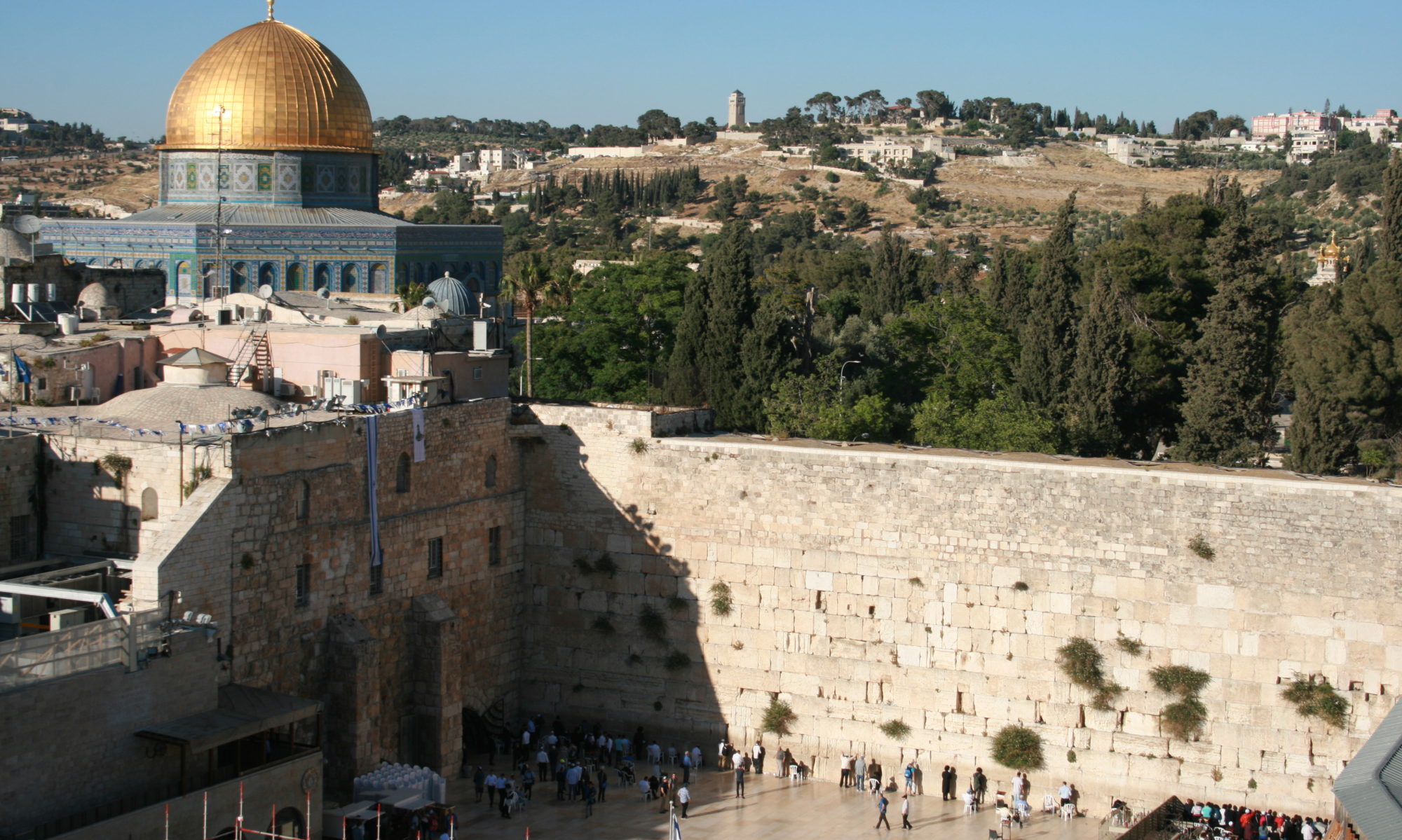One of the most beloved Israeli songs of all time, Jerusalem of Gold, is inextricably linked with the reunification of Jerusalem. First performed during the Israel Song Festival on May 15, 1967, the song at once captured the aura of the city and the hearts of the audience. It became an instant hit.
The Song Festival was an annual tradition. Every year on Independence Day, the Voice of Israel held a song contest. But as Israel approached its 19th anniversary, Jerusalem’s energetic mayor Teddy Kollek asked for more. He wanted a song written apart from the competition about the capital city.
At his request, Voice of Israel commissioned well-known lyricists to submit songs about the ancient-modern Jewish capital. Naomi Shemer, at the age of 36, was already an accomplished song writer. She was sensitive to the nation’s pulse and expressed its heart with eloquence, but this time she refused. The task was too great.
Jerusalem was the city David conquered and made his capital. The Temple Mount was the emotional and religious focus of the Jewish people for three thousand years, the site of the original Temple until it was destroyed by the Romans in 70 CE, and according to the Bible, the site of the binding of Isaac. Jerusalem was the city where Jews were obligated to pilgrimage and sacrifice, and to which they returned to pray even after the Temple was destroyed. How could this be summed up in a song?
The idea simmered in Shemer’s brain, and she found herself inspired by the story of Rabbi Akiva, who lived during the first and second centuries and was reputedly so poor that his wife sold her hair to pay for his education. Akiva promised that one day he would repay her; he would buy her a Jerusalem of Gold.
A “city of gold” in the language of the day was a lyrical reference to a piece of woman’s jewelry; a metal headband or crown. The metaphor arose from the likeness to the thick defensive walls that surrounded the cities of ancient times.
But Akiva conjures more than a poetic title. He was the spiritual inspiration behind the Bar Kochba revolt of 132-135 CE. The rebellion failed and the emperor Hadrian banished Jews from Jerusalem, renamed the city Aelia Capitolina (honoring his family name and Jupiter), and planted a temple to the head of the Roman pantheon in the hope the Jews would forget or abandon this part of their identity.
Naomi Shemer drew on parallels between the Roman era and her own. In 1948, Jordan occupied the Old City of Jerusalem. Jewish residents were exiled; Jews were not permitted into the city to pray.
Shemer’s song evokes the atmosphere of Jerusalem, the air “clear as wine,” and the sound of bells at twilight. She tells us how the city is bereft of the people for whom it is their eternal capital. “The cisterns have dried” brings us back to ancient times, as do the Biblical references deftly woven into the present. In the second verse, “The city that sits solitary” is paraphrased from Lamentations, and in the fifth verse, “If I forget Jerusalem” quotes Psalm 137.
The city “has a wall in its heart.” Although many think this means the wall that divided Jordanian East Jerusalem from Israeli West Jerusalem, the primary reference is to the Western Wall. The Kotel, as it’s called in Hebrew, is the surviving remnant of the retaining wall that supported the Temple Mount. It is the closest that religious Jews could approach to the ancient Temple (for religious as well as political reasons) and is the heart of the city for every observant Jew.
While the nation listened to the festival on the radio, Egypt’s President Nasser was moving his army into the Sinai Peninsula. In the weeks that followed, Nasser closed the Straits of Tiran to Israeli shipping, threatening Israel’s oil supply and the cease-fire that held since the 1956 Sinai Campaign. Israel waited for three tense weeks, unsure if Egypt would attack, if the international community would uphold its promises from 1956, or if in the end Israel would be forced to defend herself against an enemy with many times her population and war materiel.
During that ‘Waiting Period,’ Jerusalem of Gold was played and replayed on national radio. It became the anthem to the era (and some have suggested it should replace Hatikva as Israel’s national anthem). Paratroopers sang the song in buses on their way to Jerusalem to take part in the battle for the city. On June 7, 1967, the city was reunited, and the soldiers of the 55th Paratroop Brigade sang Jerusalem of Gold at the Western Wall.
After Jerusalem was unified, Shemer was asked to rewrite the song to reflect the new circumstances. Rightly, she refused, but she added two final verses that begin, “We have returned.”
After 50 years, Jerusalem of Gold remains one of Israel’s most popular songs. Naomi Shemer, inspired in writing it, has inspired others with her beautiful lyrics. We will not forget Jerusalem of Gold, and Shemer will remain the harp for our songs.
Sources and further information:
Jerusalem of Gold sung by Shuli Natan.
Song lyrics.
National Library of Israel.
Jerusalem Post homage to Shemer.
Jerusalem of Gold & Rabbi Akiva.
